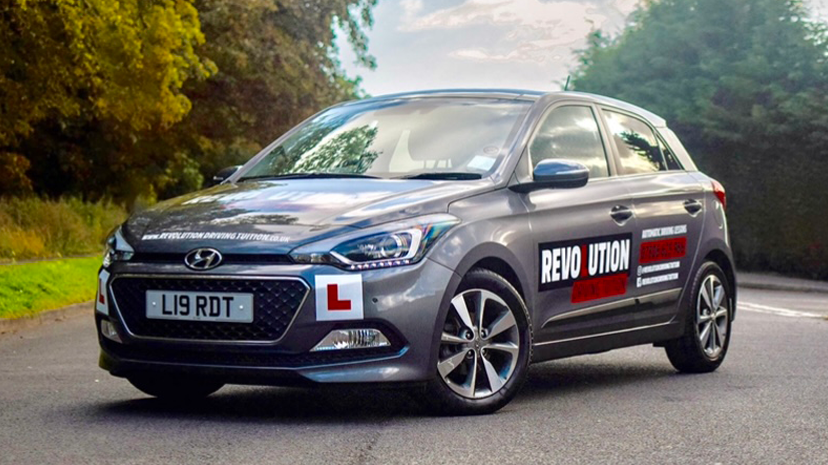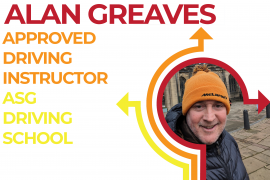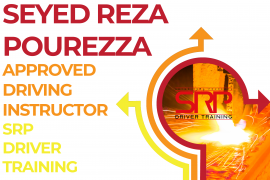Previous articles in this series have looked at admin steps before applying to become a driving instructor and at the ADI Part 1 test, the theory and hazard perception test.
In this section of the Becoming an ADI series we look at the ADI Part 2 test, the test of driving ability.
It’s all very exciting. You’ve notched up your first win with a pass in the Theory Test Centre and now you get to show what you can do behind the wheel of a car.
Let’s not get carried away here though. According to research by the Express, 60% of full licence holders would probably fail an L test, let alone the ADI Part 2 which is longer and harder.
Time to get some help, find an instructor trainer here:
SDDIA Instructor Trainers
Defining Terms:
ADI – Approved Driving Instructor
PDI – Potential Driving Instructor (Trainee)
DVSA – Driver & Vehicle Standards Agency, the governing body of driving instructors.
ORDIT – Official Register of Driving Instructor Trainers.
Part 1 – The theory and hazard perception test taken on a computer at a theory test centre.
Part 2 – The test of driving ability taken at a Driving Test Centre with a Senior Examiner.
Part 3 – The test of instructional ability. A senior examiner watches you give a lesson to a live customer and grades your performance.
Standards Check – Once every 4 years an ADI has to take what is effectively another Part 3 test so the DVSA can confirm the instructor continues to meet the required standard.
PDI/Pink Badge – The licence which allows a trainee instructor to teach for money whilst training. Lasts 6 months and is square with a pink colour and a triangle on the front side.
ADI/Green Badge – The licence which allows an approved instructor to teach for money as an Approved Driving Instructor. Lasts for 4 years then must be renewed. It is green in colour and has an octagon on the front side.
DVSA Enforcement Officer – The DVSA changed the job title of Senior Examiner to Enforcement Officer when the DSA merged with VOSA. An EO is an examiner who carries out ADI Part 2 and Part 3 test.
Note that this process detailed herein is for applications to become a driving instructor in Great Britain only. Northern Ireland operates a different scheme which is administered by the DVA. Please search for local guides to begin your journey.
ADI Part 2 Test – Showing what you can do.
Step 1: Get a test booked!
As was alluded to in the previous article, the waiting times for driving tests are crazy long right now. I’m writing this article on 29th September 2022 and I’ve just searched for Sheffield Handsworth, Chesterfield, Barnsley, Derby (Alvaston) and Leeds test centres. There are just 2 ADI Part 2 tests available for the next six months.
So it’s important that you get on to booking an ADI Part 2 test as soon as you can after passing your ADI Part 1. As we said at the end of the previous article, the clock is now ticking and you’ve got at the worst case scenario, six driving tests to fit into the 24 months your theory is valid for.
You can book your ADI Part 2 test here for a booking fee of £111 at the time of writing. Alternatively you may be able to ask your trainer to book it for you. This could be preferable because ADI’s with access to the OBS (Online Booking System) can search multiple test centres at the same time for tests.
Step 2 – Make sure your car fits the bill.
IF YOUR CAR HAS L PLATES FITTED THEY MUST BE REMOVED FOR THE ADI PART 2 TEST. IF THEY CANNOT BE REMOVED THEY MUST BE COVERED UP.
Please Note: the law says that any vehicle driven by a learner must display red L plates, (and/or red D plates in Wales) but that they should be covered up when a full licence holder is driving except for driving school vehicles. So your own vehicle at this stage of the application and training process should not display L plates unless a provisional licence holder is driving. If you hire a dual control vehicle with L plates as part of the livery, you should cover the L plates prior to leaving the hire company.
Step 3 – It’s test day. What do I do?
Arrive at your test centre in plenty of time, but please note that at most test centres you will not be allowed on site until 10 minutes before your test booking. This is to avoided clogging up the car park for any learner drivers, particularly those coming back from driving tests.
Most test centres have returned to using the waiting room and meeting candidates there.
The driving test takes approximately an hour to complete and includes five sections:
The Eyesight Check.
You will be expected to read, or be able to accurately write down, a standard new style UK registration number (YX67 RZY) from a distance of ‘obviously more than’ 26.5 metres. You can use corrective lenses if you need them. Old style plates must be read from 27.5 metres.
If you are unable to read the number plate, or cannot correctly write the letters and numbers on the number plate down, the examiner will select another number plate and allow you to walk forward to ‘just over’ 26.5 metres away. If you can’t read this one, the examiner will get the Official Measuring Tape! and measure exactly 26.5 (or 27.5) metres from a third registration plate.
If you are unable to read the registration number after all of these steps have been completed the test will not go ahead. You will lose your test fee and you will also lose one of your 3 attempts at the test.
Only in very rare circumstances where there is doubt, will a fourth number plate and the Official Measuring Tape be used.
Our advice: Get your eyes checked ahead of time and ask the optician to confirm your visual acuity to instructor test standard, not to L test or even HGV standard.
Failing the eyesight check will mean that you wont take the driving part of the test but because the ADI eyesight standard is higher than that of a Category B driver, you will not be risking your car licence by failing this eyesight check.
The Show Me Tell Me questions.
There are a total of 22 Show Me Tell Me questions and all but one of them is taken directly from the L test for learner drivers. They are broken down in to 8 Show Me and 14 Tell Me.
You will be asked 2 ‘Show Me’ questions and 3 ‘Tell Me questions. The ‘Tell Me’ questions will be asked at the test centre before the driving component of the test. The ‘Show Me’ questions will be asked on the move.
Note: Some electric vehicles do not have coolant and no electric vehicles have oil. Your examiner shouldn’t ask these questions but if they do you can either inform them the car is electric and doesn’t take that fluid and ask for another question or you can open the bonnet and tell them what you would do if the car had the necessary fluids.
Ensure you are well aware of how to use the controls on the vehicle you take to test. I took my part 2 test twice; failing the first one with a single driving fault and a single serious fault. The driving fault was for drifting while trying to figure out how to wash and clean the rear window while on the move in a hired car.
The Independent Drive.
The driving test includes a section on independent driving. This will last for around 20 minutes of the test and will require the candidate to navigate without the examiner’s assistance. The examiner will tell you if they expect you to follow a satellite navigation system or road signs.
The General.
The general drive is judged the same as the independent drive. However for the majority of the test the examiner will give you directions. The drive will also include several pull ups at the side of the road. The examiner will expect you to demonstrate:
The reversing manoeuvres.
There are four different manoeuvres that the examiner can choose from and he/she will ask you to demonstrate two of the four during the test. These are:
The examiner will not only look for expert and confident control but also for a very high standard of all round observation. You can use parking sensors and/or reversing cameras to aid in the manoeuvres but you must also include all the observations you would do if you didn’t have the extra technology.
The results.
If you pass the test.
At the end of the test, the examiner will invite you to park and secure the vehicle and then give you the result. You will pass the test if you accrue up to six driving faults. You cannot have any serious or dangerous faults.
If you have been accompanied by your trainer, you will be given the option to allow your trainer to listen to the debrief.
Once all parties are present the examiner will announce the result of the test and offer to go through any driving faults you incurred during test. Even with a pass it is worthwhile listening closely to this debrief. It will give you further areas to develop your driving. It will also give you a chance to ask any questions you may have.
The examiner will not give you a certificate. Your result will be emailed to the address you confirm at the start of the test.
You can now complete your 40 hours training and apply for a trainee licence. However you do not have to go down this route and can simply book an ADI Part 3 test. If you do not apply for a trainee licence you cannot charge for tuition until you have passed an ADI Part 3 test.
Please note that if you do not undergo some professional training at this point, you are extremely unlikely to be successful in your ADI Part 3 test.
If you are unsuccessful.
If the result isn’t what we all hope for, all is not lost. You do have three attempts at the test before you have to start the process again. Book a test in the same way as your first was booked.
Many large training providers will offer additional ‘rescue’ training. If offered, you need to take it; a lot of large training providers with attached franchises will not terminate a contract in the event of three unsuccessful attempts at either the part 2 or part 3 test, unless you have made ‘all efforts’ to pass those tests.






